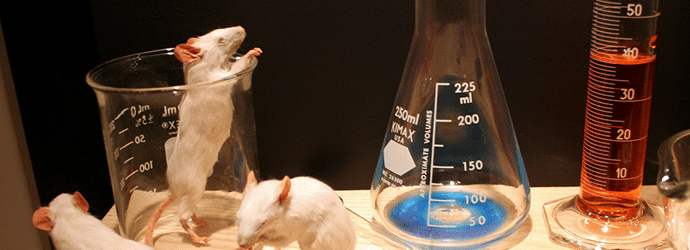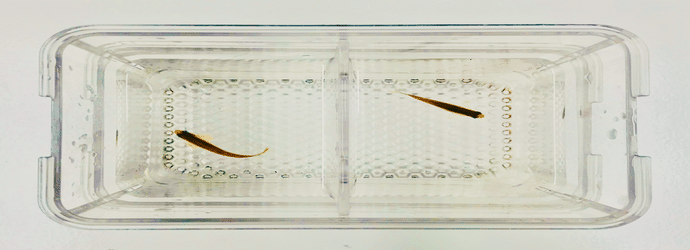Organoids are a developing star of research. They can be grown to represent the majority of mammalian organs and have a wide range of possible applications. More realistic than simple monolayer cell culture, they offer an in-between step that reduces the need for animal models and simplifies (although doesn’t completely remove) ethics paperwork. They are also being used in precision medicine where patient-derived organoids are used to test treatment strategies. Once you’ve got to grips with the technique, you can grow up a large number of organoids at once, before conducting lots of experiments to achieve high n numbers. But that’s getting a little ahead of ourselves. First, you have to get to grips with the basics of establishing organoids. In this article, I’ll walk you through some of the initial considerations that you’ll need before you embark upon your exciting organoid research.
Ensure Your Organ Can Be Modelled With Organoids
The first step when establishing organoids is to determine if you can model your organ of interest with them and how difficult it will be. Different organs have different requirements and the same will be true of your organoids. These differences will have an impact on the medium required to grow your organoids as well as the damage model you use (see later). Some organs are trickier than others to reproduce in a dish and this is normally related to how regenerative the organ is in real life and how active its progenitor population is. For example, skin organoids are one of the easiest to grow, in part due to the rapid turn-over of keratinocytes and the large population of progenitor cells in the tissue.1 Skin also has a relatively simple stratified structure with a limited number of key cell types.
If you are trying to model kidneys with organoids, make sure you stop by and read our article on Kidney Organoids Derived from Human Pluripotent Stem Cells.
Simple is Better
A simple tissue makes for a simple (or simpler) organoid culture and other simpler tissues that are easy to create organoids for include liver and breast tissues. On the opposite side are the more difficult and complicated organs, such as the lung. As you move from the top of the trachea into the lower parts of the lung, the structure changes. It also has much more diverse cell populations and a much lower number of progenitor cells. All this makes the lung a far more difficult, although not impossible, organ to culture. Are you interested in kidney organoids? Check out our article on
You can check whether your organoid of choice is easy to create (or if it is one of the very few organs that can’t be modelled) through a brief literature search or enquiry to companies that produce organoid cultures/culture media. There may also be symposiums or meetings in your local area that would provide additional insight, so ask around at your research institute.
Select the Right Stem Cell Source for Establishing Organoids
Establishing organoids requires stem cells and no matter which organ you’re planning to model, there are three main sources to consider:
Embryonic Stem Cells2
These stem cells have the obvious advantage of already being pluripotent (hence their alternative name, pluripotent stem cell-derived organoids) and able to differentiate into any cell type and develop whichever way they are guided.3 These are difficult to come by, however, and have a lot of ethical complications to wade through. Although these were the original source of cells for organoids during their early development, they are being used much less frequently.
Self-Renewing Stem Cell Lines, or Commercially Made Organoids
These are available for intestinal, hepatic and pancreatic models (such as those available from Cellesce4 or Stemcell technologies5). Many of these organoids and cells are mouse-derived, something to be aware of if you want to stay human-specific. The financial cost of this option is high but this comes with a high change of success, something to consider if you’re nervous of tissue culture.
Adult Tissue-Derived Stem Cells
Whether samples are taken from healthy adults (mouse or human) or patients that suffer from a particular disease of interest, these cells can be turned into stem cell-like progenitors6. These can then form the multiple components of a tissue. Alternatively, resident stem cells can be isolated from tissue samples, using markers such as LGR57, which can then be encouraged to differentiate.8,9 If you decide to use mouse cells, they’ll provide a more controllable genotype.
This method is possibly the most accessible, although developing the expertise can take some time and effort. Being able to use patient samples adds an additional attraction as direct comparisons between disease-associated genotype and healthy cells can be drawn. Ethical approval would be required for this kind of work, with appropriate protocols in place for storage and disposal of human samples. A bit of extra paperwork but no more than use of human blood/usual patient samples. There should be someone in your department/university/research centre that can provide guidance on this. For example protocols that both isolate and use adult tissue-derived stem cells, see: Drost et al.10 or the Sigma-Aldrich website.11
Choose the Right Culture Medium for Establishing Organoids
The most difficult part of establishing organoids is knowing the appropriate culture medium and conditions for organoid growth. Organoids require a more delicate balance of nutrients and additives in media than standard cell culture, especially if primary human-derived cells are used. Cell lines, such as MDCKs, HaCaTs or HeLas, have been designed to continue growing and dividing indefinitely, so they are pretty hardy. Organoids are more needy, requiring growth factors to continue growing and the correct matrix to grow against.
Growth Factors for Organoids
The appropriate growth factors for your organoid of choice can be found after a brief literature review and, although there will be variation from organ to organ, will most likely involve R-spondins and BMP signalling antagonists such as Noggin or Gremlin-1.12 Of course, you need to ensure that you are using the correct protein for the species that you’re using.
Cost Considerations
The expense of culture media will be a key component to the overall cost of organoid experiments. There are preformulated growth factor mixes that can be added into media stocks and premade bottles of media available commercially, although this is for a limited range of organs (for example, StemCell Technologies offer medias for intestinal, liver, brain and pancreatic organoids). These remove the trial and error from organoid culture and may be somewhat cost effective if you’re only doing a couple of experiments. Ultimately, however, commercial media will prove more expensive in the long term than buying in individual components and making the media to your own recipe.
Determine How to Model Disease or Damage
Once you’ve grown your healthy organoid, you need to know how to induce the necessary damage to recreate your desired phenotype or disease model. It is worth remembering that organoid structure usually resembles a ball of cells. Although this doesn’t pose too much of a problem for internal organ systems, such as the liver, organs with differing ‘surfaces’ may have access issues. For example, intestinal organoids have the luminal surface at the centre of the organoid, with the outermost layer representing the basement membrane.13 Therefore, damage that impacts the internal lining of the gut has to be induced by injecting relevant drugs or chemical compounds into the organoid, which can be fiddly.
Physical damage would also be that much more difficult to carry out. As organoid work becomes more popular, there are various conferences popping up (including ones run by EMBL, keystone and there’s even a European Organoids Symposium) and papers being published (see reference list). These would both be excellent resources to find out more about possible damage methods and how others in your field are using their organoids.
Decide on Your Analysis Technique
After all the difficulties listed above with establishing organoids, you may be relieved to hear that analysing your organoids may be no more complicated than your other cell-based experiments. It’s the light at the end of the tunnel. Organoid structures can be lysed and analysed by rtPCR or western blot as early as any other tissue sample. ELISA can be carried out on the surrounding media and organoids can be mounted, sliced and stained for imaging quite easily. Cytopathology microscopy can be used to characterise and validate patient-derived organoids for personalised treatment. Happily, this final stage is the simplest part of organoid culture planning and should yield good results.
So, that’s it. Or, at least, that’s the beginning of it. Organoid research is a really exciting, ever-expanding area and I hope these initial planning points will help you get started!
References
- Potten, C. S. Cell Replacement in Epidermis (Keratopoiesis) via Discrete Units of Proliferation. in International Review of Cytology (eds. Bourne, G. H., Danielli, J. F. & Jeon, K. W.) vol. 69 271–318 (Academic Press, 1981).
- Shkumatov, A., Baek, K. & Kong, H. Matrix Rigidity-Modulated Cardiovascular Organoid Formation from Embryoid Bodies. PLOS ONE 9, e94764 (2014).
- Takasato, M. et al. Directing human embryonic stem cell differentiation towards a renal lineage generates a self-organizing kidney. Nat Cell Biol 16, 118–126 (2014).
- Products & Services – Cellesce.
- Product portfolio – Stemcell Technologies.
- Forbes, T. A. et al. Patient-iPSC-Derived Kidney Organoids Show Functional Validation of a Ciliopathic Renal Phenotype and Reveal Underlying Pathogenetic Mechanisms. The American Journal of Human Genetics 102, 816–831 (2018).
- Hsu, S. Y., Liang, S.-G. & Hsueh, A. J. W. Characterization of Two LGR Genes Homologous to Gonadotropin and Thyrotropin Receptors with Extracellular Leucine-Rich Repeats and a G Protein-Coupled, Seven-Transmembrane Region. Mol Endocrinol 12, 1830–1845 (1998).
- Lee, J.-H. et al. Lung Stem Cell Differentiation in Mice Directed by Endothelial Cells via a BMP4-NFATc1-Thrombospondin-1 Axis. Cell 156, 440–455 (2014).
- Vianello, F. & Poznansky, M. C. Generation of a tissue-engineered thymic organoid. Methods Mol. Biol. 380, 163–170 (2007).
- Drost, J. et al. Organoid culture systems for prostate epithelial and cancer tissue. Nature Protocols 11, 347–358 (2016).
- Human Colon Organoids. Sigma-Aldrich
- Urbischek, M. et al. Organoid culture media formulated with growth factors of defined cellular activity. Sci Rep 9, 1–11 (2019).
- Mahé, M. M. et al. Establishment of gastrointestinal epithelial organoids. Curr Protoc Mouse Biol 3, 217–240 (2013).







